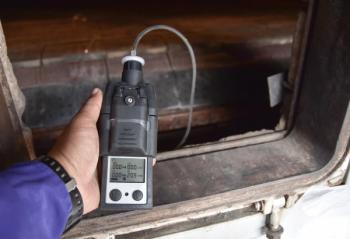
Real-Time Monitoring of Arsenic in Natural Waters
Key Takeaways
- Automation and technology are revolutionizing oceanography, especially in environmental monitoring applications.
- The FI-HG-AFS system enables real-time, automated, and continuous monitoring of TDIAs, ensuring data reliability.
Researchers recently unveiled a automated system for real-time monitoring of arsenic pollution in aquatic environments, enhancing environmental safety.
Oceanography is currently benefitting from the rise of automation and technological innovation. In particular, these new technologies have been applied for environmental monitoring purposes. Recently, a team of researchers from Guangxi University, the Fourth Institute of Oceanography, and the Ministry of Natural Resources in China, explored one of these newly developed technologies and evaluated its effectiveness in tracking arsenic pollution in aquatic environments. This study, which was published in the journal Talanta, showcased the first fully automated, continuous, and long-term monitoring system for total dissolved inorganic arsenic (TDIAs) in natural waters, which was developed by the authors of this study (1).
Why is arsenic contamination a problem?
Arsenic is a highly toxic, naturally occurring metal that is often used in many industrial practices (2). Particularly in areas where industrial activity, agricultural runoff, or natural geological processes, arsenic is a high probability of entering into the water supply and in marine systems. As a result, both humans and living organisms are susceptible to ingesting this metal through contaminated water, which can lead to serious negative health effects, including cancer (2).
Because of arsenic’s danger to human and animal health, scientists are investigating new methods to better monitor the presence of arsenic in water. Traditionally, arsenic detection relies on laboratory-based analysis, which often faces delays, high costs, and difficulties in handling complex environmental matrices (1). These limitations have hindered timely responses to potential contamination events.
What did the researchers do in their study?
In their study, the research team developed a new system capable of on-site, automated monitoring that can operate continuously over extended periods. This system, called Flow Injection–Hydride Generation–Atomic Fluorescence Spectroscopy (FI-HG-AFS), integrates flow injection technology, hydrogen generation through water electrolysis, and an on-line pre-reduction heating module into a unified platform that is both environmentally adaptable and precise (1).
What are the capabilities of the FI-HG-AFS system?
The FI-HG-AFS system can conduct real-time, automated, and continuous analysis of TDIAs. Importantly, it prevents the oxidation of arsenic species during measurement, a common issue that compromises data reliability in conventional techniques (1). The researchers optimized key parameters, including chemical vapor generation conditions and the kinetic processes of arsenic pre-reduction, to ensure both accuracy and consistency (1).
What were the performance testing results?
Using the FI-HG-AFS system, the researchers demonstrated the detection limit reached as low as 0.005 μg/L, with a linear range of 0.0–5.0 μg/L, while relative standard deviations ranged between 0.6% and 7.3%, which indicated high precision (1). With their validation experiments using tap water, lake water, and sea water, the researchers showed recovery rates between 97.8% and 107.8%, proving the system’s resilience against interference from diverse environmental matrices (1).
The researchers also conducted a 32-hr continuous monitoring trial in the Jinjiang River Estuary, Quanzhou Bay, China. Over the course of the study, the device successfully performed up to 50 automated analyses per day, delivering reliable, real-time data on arsenic levels (1).
The researchers emphasized in their study that this is the first successful realization of continuous, automatic, and long-term on-site monitoring of TDIAs, providing a critical tool for environmental agencies and policymakers. By enabling rapid detection of contamination, the system offers the possibility of earlier interventions to protect ecosystems and human health (1).
In addition to technical performance, the design prioritizes operational convenience and environmental adaptability, making it suitable for diverse field conditions. The study also detailed the preparation of chemical reagents, which met analytical purity standards, and the use of ultrapure water from a Millipore purification system to ensure accuracy during development and testing (1).
The authors note that the system’s integration of multiple modules into a compact, automated workflow sets a new benchmark for environmental monitoring technology. Beyond arsenic detection, the principles demonstrated in this study could potentially be adapted for monitoring other hazardous elements in natural waters (1).
References
- Pang, S.; Guan, Y.; Wei, H.; et al. On-site Determination of Total Dissolved Inorganic Arsenic in Natural Waters by a Portable Atomic Fluorescence Spectroscopy. Talanta 2026, 297 Part A, 128566. DOI:
10.1016/j.talanta.2025.128566 - Water Resources Mission Area, Arsenic and Drinking Water. USGS.gov. Available at:
https://www.usgs.gov/mission-areas/water-resources/science/arsenic-and-drinking-water (accessed 2025-10-01).
Newsletter
Get essential updates on the latest spectroscopy technologies, regulatory standards, and best practices—subscribe today to Spectroscopy.





